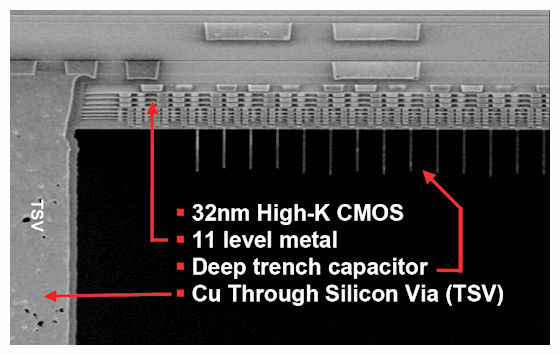All I know is that there aren't a lot of companies that do both DRAM/NAND and things like processors, and the ones that do have separate foundries for it and use separately named processes, and not everyone offers eDRAM.
Note that eDRAM is not the same at all as traditional DRAM.
In modern high-density DRAM, the bit lines are on the substrate surface, the word lines are buried below the surface of the substrate, and the capacitors are formed by growing them on the top. This allows the capacitors to be very tall compared to the area they take, allowing them to have sufficient capacitance to retain data while taking minimal area. This allows for great bit density, using minimal process steps and conserving the need to use the most expensive equipment.
There's just one problem -- this process is completely incompatible with the kind of multi-layer, close to the transistor metal stacks that are needed for fast logic. You simply cannot form this kind of DRAM on the same chip you put a cpu on. Either your metal stack connects to the transistors through really tall vias (hello latency), or you'd basically have to eradicate either the metal stack or the capacitors to construct the other.
eDRAM like the IBM variety is built by deep trench insertion, or boring the capacitors
into the substrate, instead of building them on top of it. Then, you can build your tall metal stack on top of that and get logic and DRAM on the same chip. As an added benefit, eDRAM can be quite a bit faster because the transistors of the charge pumps can be closer to their metal stacks. As a negative, the process steps needed to bore very regular holes deep into the substrate and coat two sides of them with the plate material so that they can't touch each other are quite a bit more involved than what are used in normal DRAM, leading to much more expensive chips.
A good picture from IBM, showing logic, metal stack, DTI caps, and a TSV:
It is eDRAM if it embeds the DRAM controller or anything else for that matter.
This is a common misconception. Traditional DRAM and eDRAM differ by their structure, not by whether something is embedded or not. A full chip of eDRAM that embeds no logic is still eDRAM.





